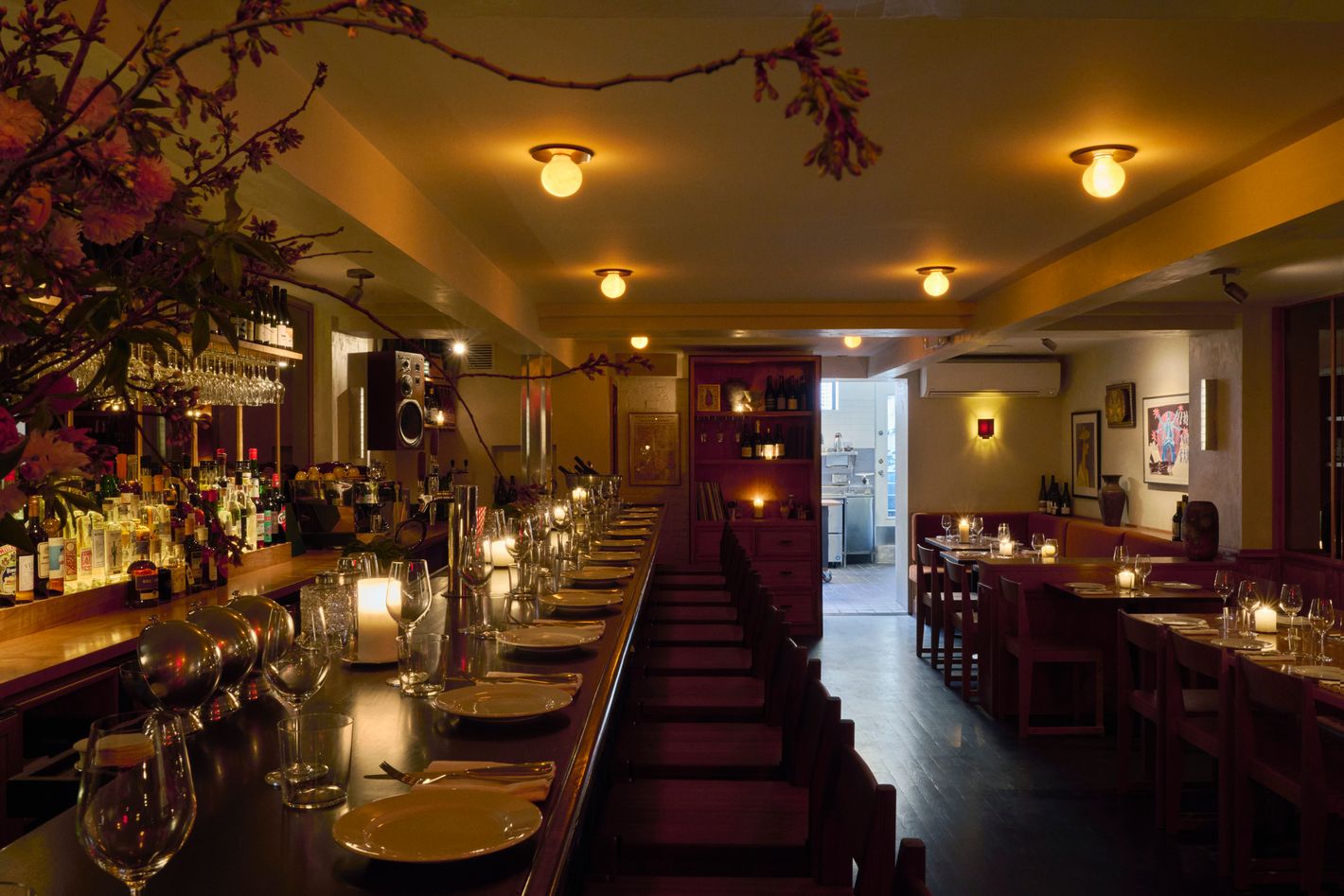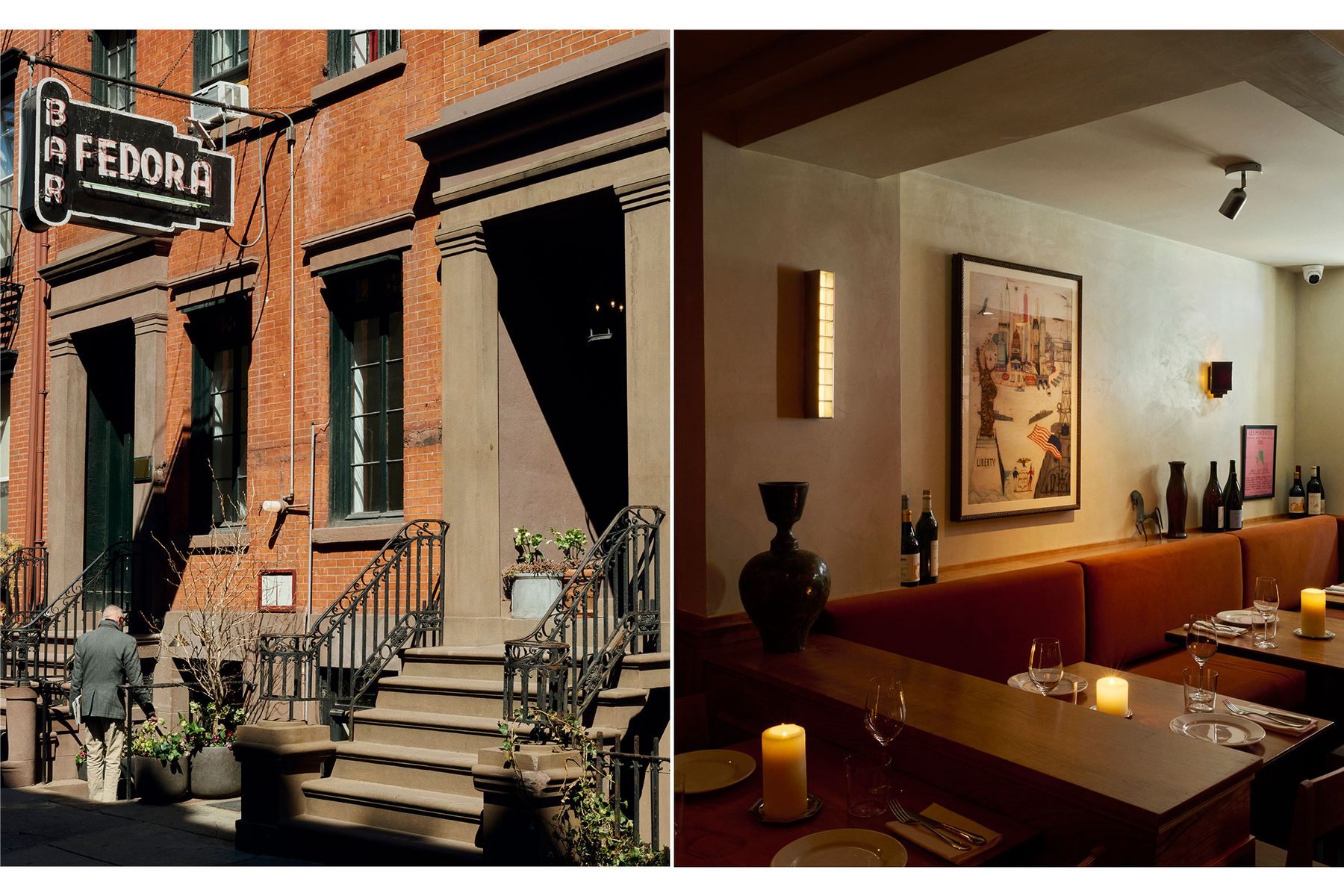when you want, where you want.
Fedora Is Reborn
 Photo: Hugo Yu
Photo: Hugo Yu
In a couple of weeks, a familiar restaurant in a very familiar space will, after laying dormant for a bit, reopen to the public: Fedora’s neon sign is flickering back to life, with new hosts at the helm.
It’s been just about four years since the black double doors and tiled entryway last welcomed bargoers, but the restaurant is far from forgotten. “The number of people who come to the door and are like, ‘Are you open? I want to come back to this,’ has been amazing,” says Andrew Dete, a partner in the new restaurant. “It’s been a few years, so we weren’t sure how many people would remember it. We were wrong.”
There’s a lot of history here. The space has Prohibition-era roots as Charlie’s Garden and was, from 1952 until 2010, operated by Fedora Dorato, an adored proprietress who was received with applause when she entered the restaurant each evening. Over the years, she ran the kitchen and the long bar, though well above the food and drinks, Dorato’s convivial, all-welcome-here nature was the main attraction. At 90, she decided to leave her post behind the bar and find a new tenant. The story goes that she selected Gabriel Stulman, another West Village goodwill ambassador, to lead it forward. Stulman glammed up the well-worn space with black leather banquets, brass railings, and low tin ceilings, while managing to keep the identity of a neighborhood hangout, with Brian Bartels, its familiar, ever-present bar director, as master of ceremonies. The restaurant, a casualty of the pandemic, closed for good in late 2020. For a blip, it seemed that 4 Charles restaurateur Brendan Sodikoff would be the next tenant, but instead, Dete and Christa Alexander — partners in St. Jardim, the wine bar and café on the same block — along with their wine director there, Basile Al Mileik, signed on to the location last year.
Fedora has always been defined by its leader and in this revival that person is Al Mileik. He’s been a fixture of the NYC wine world, particularly when it comes to low-intervention wines, for the last ten years, having worked at Reynard, the Four Horsemen, and most recently running St. Jardim alongside GM Noah Rubin. (Rubin will also be involved at the new restaurant.) Inside Fedora, Al Mileik points out the front corner of the bar, a nook under the building’s stairs that will serve as a cozy bar, where he imagines neighbors with drinks on the rail as they wait for seats to open up. Fedora’s list will put a focus on classical wines from Burgundy and Champagne, mixed in with bottles from emerging regions. ”For me, there’s a ranking of a standing wine versus sitting wine,” Al Mileik says. “St. Jardim is a little bit more standing wine. Here it will be slightly more sitting wine.”
 Photo: Hugo Yu
Photo: Hugo Yu
In keeping with the neighborhood-joint mentality, the plan is to reserve a good portion of seats for walk-ins, with a full menu from chef Monty Forrest, a New York native whom Al Mileik worked with at Reynard years ago and who most recently ran the kitchen at Le Rock. His food will skew European, though it will be free of ties to any specific country or region. Instead, his menu would likely have felt at home in any of Fedora’s iterations: He’ll offer a substantial wing-attached chicken cordon bleu with a salad of spicy greens (“It’s elegant, but it’s rich and it’s comforting,” says Al Mileik), and is working on dishes like spaghetti with clams and oregano, black-bass Provençale, and a roasted-beef culotte with carrots. No matter what makes the final menu, “the food is very anti-trend,” Forrest says. “It’s just really tried and true.”
Cocktails, from Ben Finkelstein, the bar director at St. Jardim, will lean classic, too, with an emphasis on craft spirits and wine-based ingredients like vermouth and sherry. But despite an appreciation for the restaurant’s history, the partners have made some noticeable changes. They even flirted with changing the name, “but the more we got in here and scrubbed stuff off the walls, we were kind of like, ‘It just is named Fedora’,” Dete says. So they hired the design firm Post Company (who worked on Raf’s and recently completed Caffe Zaffri), which encouraged the partners to think about the spirit of the place instead of the literal walls. That freed them to lift the dropped ceilings, introduce some color by way of burnt sienna-upholstered banquettes; warm, blonde wood throughout; and minimalist lighting. Mirrors line the walls, giving the room a new spaciousness, even though it seats all of 39 between tables and the bar.
One thing that hasn’t changed is an appreciation for art. The walls at Fedora have always been lined with photos and pictures, no matter the owner; Dorato kept framed images of regulars and celebrity visitors, while Stulman spotlit selections from his trove of black-and-white pieces with gallery lights. Here, the artwork, all selected by Dete and Alexander, finds more color, too. The first piece they purchased is a print of Florine Stettheimer’s “Liberty”, a post–World War I painting of people returning to New York, that they’d seen at the Whitney. “That really resonated for us,” says Dete. “It feels like time to get back to that optimistic vision of New York as a bustling, teeming, colorful place.”
More New Bars and Restaurants
All Rights Reserved. Copyright 2025, Central Coast Communications, Inc.